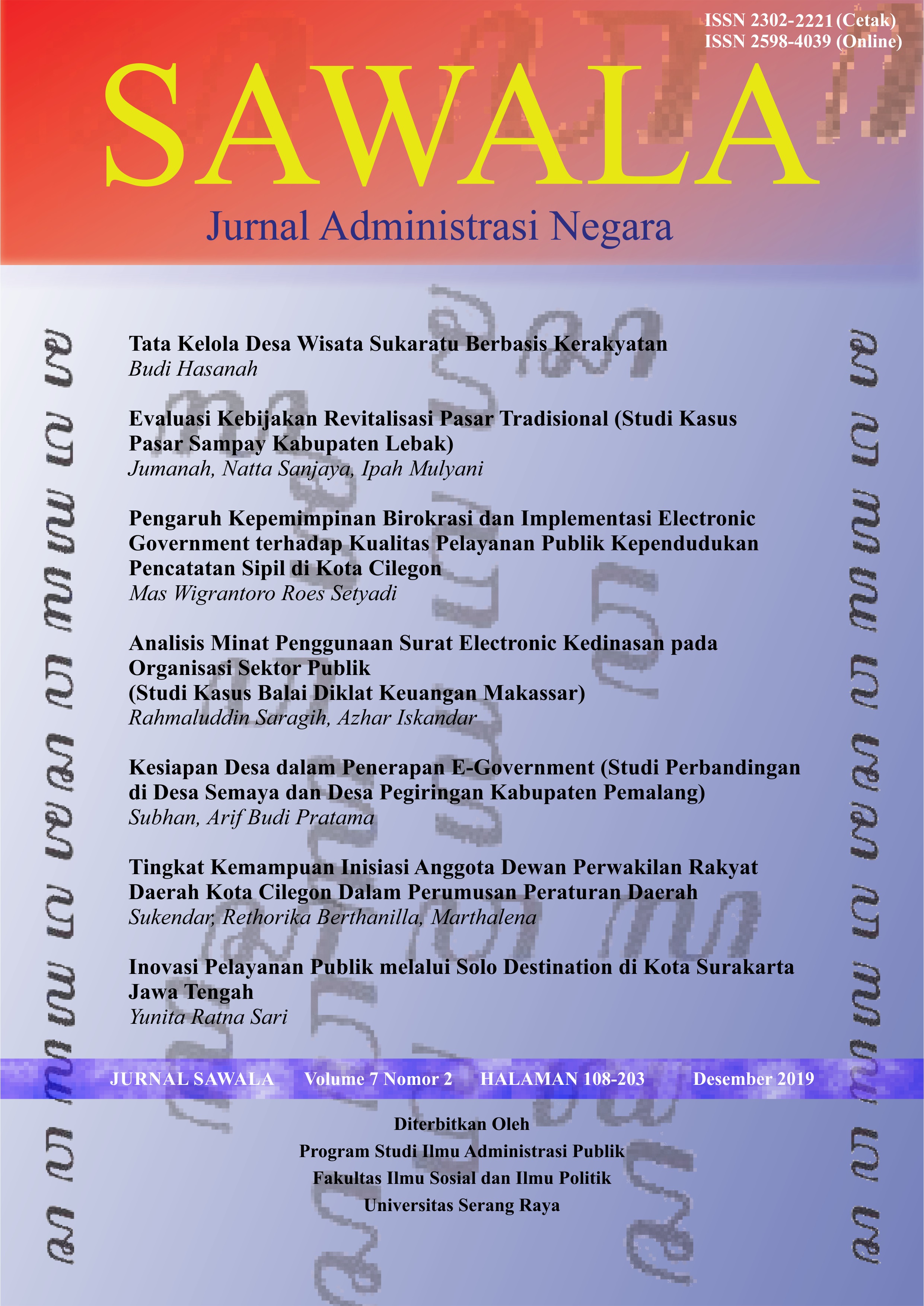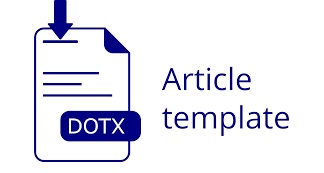Analisis Minat Penggunaan Surat Elektronik Kedinasan Pada Organisasi Sektor Publik (Studi Kasus Balai Diklat Keuangan Makassar)
DOI:
https://doi.org/10.30656/sawala.v7i2.1638Keywords:
surat elektronik, TAM, SEM, domain, kemenkeuAbstract
This research aims to evaluate the factors that influenced the behavioral intensity of apparatus for using official electronic mail in public organization based on perceived user with Theory Acceptance Model approach. Data used in this research is primary data by using questionaire. Sample collection methods used in this research was random sampling technique. Data analysis in this research uses Structural Equation Modelling (SEM) with component or varian based with Partial Least Square. The result showed that perceived ease of use significantly positive influence to perceived usefulness, perceived ease of use significantly positive influence to attitude toward using, perceived usefulness significantly positive influence to attitude toward using, behavioral intention to use significantly positive influence to actual system usage. In the other correlation path, this research also show that perceived usefulness has no significant effect on behavioral intention to use, and attitude toward using has no attitude toward using behavioral intention to use.
References
Ajzen, I., Madden, T.J. 1986. Prediction of Goal-Directed Behavior: Attitudes, Intentions, and Perceived Behavioral Control. Journal of Experimental Social Phsycology, 22, 453-474. Chin, W. W. 1998. The partial least squares approach to structural equation modeling. New Jersey: Lawrence Erlbaum. Davis, F.D. 1989. Perceived Usefulness, Perceived Ease of Use, And User Acceptance of Information Technology. Mis Quarterly, 13(3), 318-340. DeLone, W. H., & McLean, E. R. (1992). Information systems success: The quest for the dependent variable. Information systems research, 3(1), 60-95. Ghozali, I. 2008. Structural Equation Modeling metode alternatif dengan Partial Least Square, Edisi 2. Semarang. BP-Undip. Hartono, J. 2011. Metodologi Penelitian Bisnis: Salah Kaprah dan Pengalaman-pengalaman. Yogyakarta: BPFE. Ihsan, M., Azwar. 2018. Analisis Faktor-Faktor yang Mempengaruhi Kesuksesan Implementasi Sistem E-Filing Pajak : Studi Kasus Kantor Pelayanan Pajak Madya Makassar. Jurnal BPPK, Volume 11 Nomor 2 Tahun 2018.. Jahangir, N., Begum, N. 2008. The role of perceived usefulness, perceived ease of use, security and privacy, and customer attitude to engender customer adaption in the context of electronic banking. Africa Journal of Business Management, Vol. 2 No. 1, pp. 32-40. Jogiyanto, H.M. (2007). Model Kesuksesan Sistem Teknologi Informasi. Yogyakarta, Indonesia: Andi. Jogiyanto, H.M. 2007. Sistem Informasi Keperilakuan. Yogyakarta, Indonesia: Andi. Keputusan Menteri Keuangan Nomor 510/ KMK.01/2009 tentang Kebijakan dan Standar Penggunaan Akun dan Kata Sandi, Surat Elektronik, dan Internet di Lingkungan Departemen Keuangan. Nazir, M. 2003. Metodologi Penelitian. Jakarta: Ghalia Indonesia. Pikkarainen. T., Pikkareinen, K., Karjaluoto, Heikki, & Pahnila, S. 2004. Consumer Acceptance of Online Banking: An extension of The Technology Acceptance Model. Internet Research, Vol. 14, No. 3, Pp. 224-235, 2004. Sekaran, U. 2006. Research Methods for Business. 4th Ed. Jakarta. Salemba Empat. Sugiyono. 2008. Metode Penelitian Bisnis. Penerbit Alfabeta, Bandung. Venkatesh, V., Moris, & Michael, G. 2000. Why Don't Men Ever Stop to Ask For Dirrections? Gender, Social Influence, and Their Role In Technology Acceptance and Usage Behavior.Mis Quarterly, 24(1),115-139. Wiyono, A.S. 2008. Evaluasi Perilaku Penerimaan Wajib Pajak Terhadap Penggunaan E-filling Sebagai Sarana Pelaporan Pajak Secara Online dan Realtime. Jurnal Riset Akuntansi Indonesia, Vol.11, No.2, al. 117-132.









